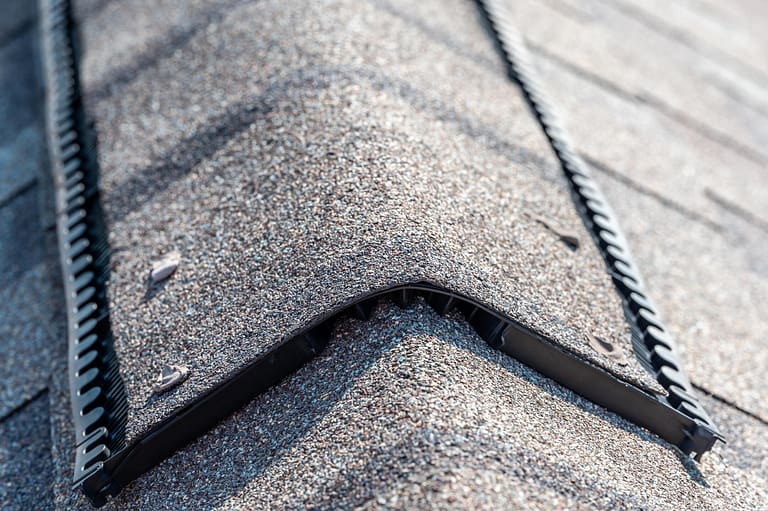
When it comes to enhancing the exterior of your home, siding is one of the most significant upgrades you can make. Not only does it improve your home’s curb appeal, but it also provides essential protective benefits. Here are three key advantages of installing siding on your home:
- Increased Durability: High-quality siding protects your home from various weather conditions, including wind, rain, and snow, thus extending the structural life of your residence.
- Enhanced Energy Efficiency: Siding acts as an additional layer of insulation, helping to regulate your home’s interior temperature and potentially lowering your energy bills.
- Low Maintenance: Many types of modern siding require minimal upkeep compared to traditional painted wood exteriors.
Among many options, Dutch lap siding stands out as a popular choice for homeowners. This guide will break down everything you need to know about Dutch lap siding, from its features and history to its types and installation.
What is Dutch Lap Siding?
Dutch lap siding, also known as traditional lap siding, is a type of cladding that features a distinctive appearance characterized by its beveled edge. Each board is slightly concave, creating a shadow line effect that adds dimension and depth when installed horizontally.
Composition and Materials
Dutch lap siding can be made from a variety of materials, including:
- Wood: Often freshly painted wood, which offers a traditional look.
- Vinyl: Provides a durable, low-maintenance option.
- Fiber Cement: Combines the aesthetic appeal of wood with enhanced durability and fire resistance.
Historical Context
Dutch lap siding has a rich history. It originated in the early American colonial period when settlers sought practical and attractive ways to protect their homes. Initially made from wood, it became popular for its ability to shed water effectively while providing an aesthetically pleasing, shadowed profile. The design mimics hand-carved planks, which were prominent in the traditional style of early American architecture.
Modern Innovations
Today’s Dutch lap siding has seen various innovations, particularly in material science. Vinyl and fiber cement variants offer superior weather resistance, lower maintenance requirements, and a longer lifespan compared to traditional wood. Furthermore, advancements in manufacturing have allowed for more precise and varied shadow lines, catering to diverse aesthetic preferences.
When to Use Dutch Lap Siding
Dutch lap siding is versatile and can complement a wide range of home styles, but it is particularly well-suited to certain architectural aesthetics.
Ideal Home Styles
- Colonial Homes: Given its historical roots, Dutch lap siding is an excellent match for colonial-style homes, enhancing their timeless appeal.
- Farmhouses: The rustic charm of Dutch lap siding pairs beautifully with the sturdy, practical aesthetics of traditional farmhouses.
- Victorian and Edwardian Homes: The detailed shadow lines can add to the intricate detailing often seen in these architectural styles.
Architectural Considerations
When considering Dutch lap siding, think about the overall design and color scheme of your home. The shadow line effect can create a dynamic visual impact, so it’s essential to choose a color that complements your existing design elements.

Types of Dutch Lap
Not all Dutch lap siding is created equal. There are several types and variations, each offering unique benefits and aesthetic qualities:
- Wood Dutch lap offers a classic look and can be painted in any color. It requires more maintenance, including regular painting and sealing to prevent rot and insect damage.
- Vinyl Dutch lap is low maintenance, resistant to rot and insects, and available in a wide range of colors and textures. However, it can be less environmentally friendly and may become brittle over time.
- Fiber cement Dutch lap is extremely durable, fire-resistant, and available in various finishes that mimic wood grain. It’s also heavier and more challenging to install, typically making it more expensive than other kinds of Dutch lap.
- Composite Dutch lap combines the benefits of multiple materials, offering enhanced durability and aesthetic versatility. This material can be more costly and may require specialized installation techniques.
How It Works
Understanding how Dutch lap siding is installed can help you appreciate its functionality and durability.
Installation Process
- Preparation: The first step involves removing any old siding and preparing the wall surface. This may include repairing any damage and adding a weather-resistant barrier.
- Measuring and Cutting: Each siding panel is measured and cut to fit precisely. Accurate measurements are crucial to ensure a seamless appearance and effective weather resistance.
- Installation: Starting from the bottom, each panel is installed horizontally. The beveled edge of each board overlaps the one below, creating the characteristic shadow line. Fasteners are used to secure the panels to the wall, ensuring they are tightly joined.
- Finishing: Trim pieces are added around windows, doors, and corners to give the installation a polished, finished look.
Maintenance Tips
- Regular Cleaning: Periodically clean the siding with a mild detergent and water to remove dirt and mildew.
- Inspect for Damage: Regularly check for any signs of wear, such as cracks or loose panels, and repair as needed.
- Repaint (for Wood): If you have wood Dutch lap siding, repaint it every few years to maintain its appearance and protect against the elements.
How to Purchase
When considering Dutch lap siding for your home, it’s essential to work with reputable contractors who can guide you through the selection and installation process.
Finding the Right Contractor
- Research and Reviews: Look for local contractors with positive reviews and a solid reputation for quality work.
- Consultations: Schedule consultations to discuss your project, obtain quotes, and review samples of Dutch lap siding.
- Credentials: Ensure the contractor is licensed, insured, and experienced with Dutch lap siding installations.
Get Dutch Lap Siding for Your Home
Dutch lap siding offers a blend of historical charm and modern functionality, making it an excellent choice for homeowners looking to enhance their home’s exterior. With its state-of-the-art materials, attractive appearance, and weather-resistant properties, Dutch lap siding provides numerous benefits that can elevate the look and durability of your home.
Ready to give your home a stunning new look with Dutch lap siding? Connect with Shingle and Metal Roofs for professional home renovations and repairs today! Contact us to get started on your journey to a more beautiful and protected home.






